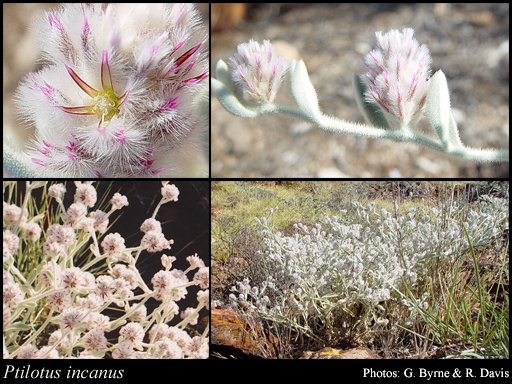- Reference
- Lam., Encycl. Suppl. 4:620 (1816)
- Conservation Code
- Not threatened
- Naturalised Status
- Native to Western Australia
- Name Status
- Current
Perennial, herb, 0.15-0.75 m high. Fl. pink, Jun to Aug. Sandy soils. Rocky outcrops, sandstone screes, hills.

Scientific Description
Shrubs or perennial herbs, stems single or several, more or less erect, persistently hairy, with dendritic hairs. Leaves present, 7-60 mm long, 5-18 mm wide, persistently hairy, with dendritic hairs; basal rosette absent; cauline leaves alternate. Spikes pink, cylindrical or hemispherical, clustered, with densely arranged flowers. Bracts 5-6 mm long, coloured, hairy, awned or mucronate, with a prominent midrib. Bracteoles 4.8-5.2 mm long, colourless, hairy, awned or mucronate, with a prominent midrib. Outer tepals 6.5-9.5 mm long, not entire. Inner tepals 6-8.5 mm long, with a basal tuft of hairs on inner face. Style 3.5-3.8 mm long, curved, obliquely fixed to ovary. Distribution: Northern and Eremaean Botanical Region; IBRA regions: Dampierland.
Distribution
- IBRA Regions
- Dampierland, Gibson Desert, Great Sandy Desert, Little Sandy Desert, Pilbara, Tanami.
- IBRA Subregions
- Chichester, Fortescue, Hamersley, Lateritic Plain, Mackay, McLarty, Pindanland, Roebourne, Rudall, Tanami Desert, Trainor.
- IMCRA Regions
- Pilbara (nearshore).
- Local Government Areas (LGAs)
- Ashburton, Broome, East Pilbara, Halls Creek, Karratha, Ngaanyatjarraku, Port Hedland, Wiluna.